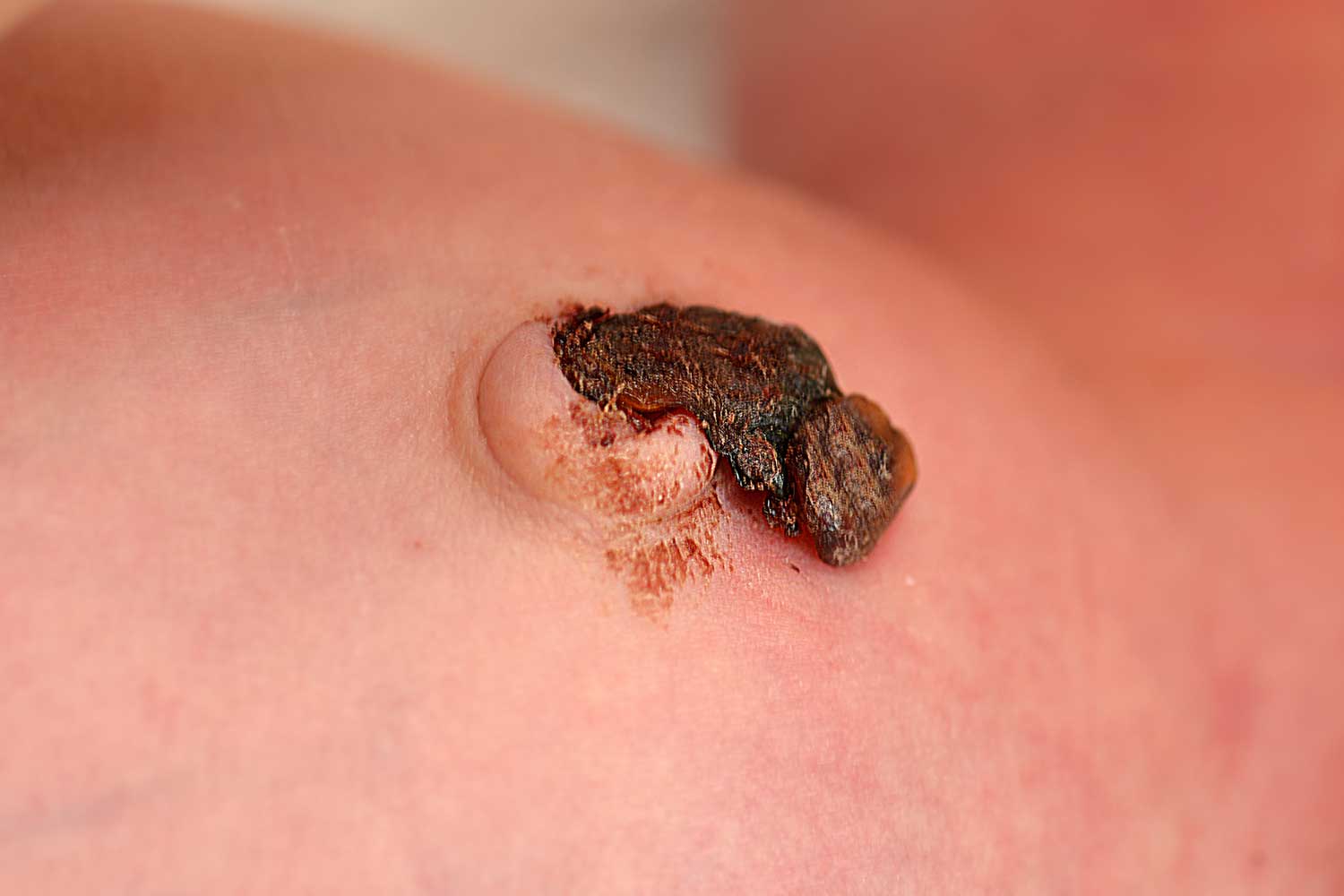Belly buttons seem to fascinate young kids, a fact not missed by authors of children’s books and the writers of VeggieTales songs. It can also be a concern for parents, and it is true that there are certain things parents need to know and to do to care for their baby’s cord.
The umbilical cord provides everything a baby needs in the womb through blood flow from the placenta. However, as soon as the baby is born, it is no longer needed. It is quickly clamped and cut, separating the baby from the placenta and the mother (when to cut the cord is currently a matter of debate). The good Lord did not provide a quick-release latch; we have to cut the cord, leaving a stump to dry up and fall off the baby’s body. This is usually a simple process; however, the cord presents a risk of infection, which can be serious or fatal.
The umbilical cord contains blood vessels that are a direct pathway into the baby’s body. Moreover, it is dead, decomposing tissue attached to the body that has to dry up and fall off. If it gets significantly contaminated with bacteria, they can grow in the cord and enter the body and cause serious and life-threatening infection in the baby. Until recently, and still in other parts of the world, the cord was treated with chemicals to decrease the risk of infection, including triple dye, chlorhexidine, and alcohol. Parents were also instructed to clean the cord with alcohol several times a day once they got home until cord fell off. This all cuts down on the risk of infection, but delays the time it takes to dry up and fall off.
Recently, research has suggested that in conditions of modern hygiene and infection control, the risk of infection is small even with no treatment, and since with treatment it takes longer to fall off, this actually increases the risk of infection. With good hygiene, it is more of a risk of infection to keep the cord hanging around longer than it is not to treat it. Though I (and others) would have liked to have seen more research on this practice before changing how we treat babies, many people and hospitals kind of jumped on this bandwagon and it became somewhat trendy not to treat cords anymore. It seems that this is now the most common practice, and parents are also instructed not to treat cords at home either. If the cord is not treated, parents need to be especially careful about looking for signs of infection.
The umbilical cord can also indicate problems sometimes; a thin or thick cord, single artery can suggest other problems. Hospital staff will examine your baby’s cord after birth. The cord can also be congenital abnormalities, such as persistent connections inside the baby such as a connection to the intestines or bladder. Fortunately, such defects are rare.
Caring for your baby’s cord
The baby’s umbilical cord stump should be kept clean and dry. Do not give your baby a full bath until the cord falls off. Keep the baby’s diaper folded down so it does not irritate the cord. You usually do not need to use alcohol or any special cleaner. It will appear a little wet and will have a slight odor. If the odor starts to bother you, go ahead and clean the stump with some alcohol. The skin around it sometimes bleeds a little as a scab forms where the cord is against the skin. If the skin around it looks red and swollen, or it starts to drain, see your baby’s doctor right away. The cord stump usually falls off in 1-3 weeks. After it falls off, the remaining tissue will appear wet for several days and then skin will form over it. If wetness persists, see your doctor. If the cord lasts longer than 3 weeks, this is known as delayed cord separation, which requires further evaluation. It may be a sign of an immune system disorder.
After the cord falls off
You may notice some bleeding; this is almost always not from the cord but where the cord was lying against the skin leaving a scab which bleeds when the scab comes off. Just keep it clean and dry. The spot where the cord was attached will still be wet for several days; it will dry and form skin over it. Sometimes it stays wet; this is called an umbilical granuloma. It needs to have a chemical applied to it in the doctor’s office to get it to dry up. Most babies have an “outie” for a variety of reasons. This usually goes away in a few months. Sometimes babies have a small hole remaining in the tissue under the umbilical cord where the vessels went through, and abdominal fluid can enter the navel causing a large “outie” called an umbilical hernia. These almost always go away by 4-5 years of age and are not usually treated before that age unless it is extremely large. Even in adulthood, some people have an “outie” and some an “innie” and that is okay. Everyone is different, even in their bellybuttons. But we all have one.
When to be concerned
You should seek medical care if:
- There is redness and swelling of skin around navel
- You see pus draining from the navel
- There is clear drainage coming from the cord
- The cord stays on longer than 3 weeks
References
Topical umbilical cord care at birth (Cochrane Review) July 19, 2004.
Janssen P, Selwood B, Dobson S, Peacock D, Thiessen P. To dye or not to dye: a randomized, clinical trial of a triple dye/alcohol regime versus dry cord care. Pediatrics. 2003;111:15–20 DOI: 10.1542/peds.111.1.15
Chlorhexidine Cleansing of the Umbilical Cord and Separation Time: A Cluster-Randomized Trial Pediatrics 2013;131:708–715 doi:10.1542/peds.2012-2951
Published February 19, 2014. Last revised January 19, 2016

